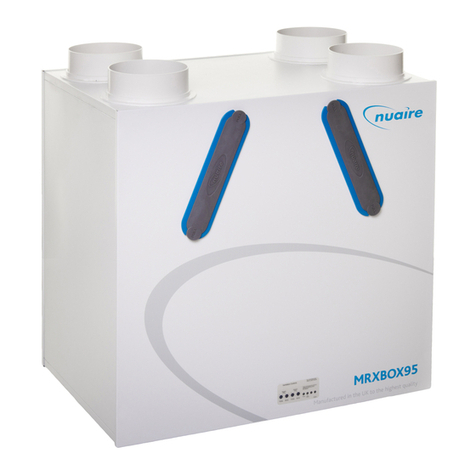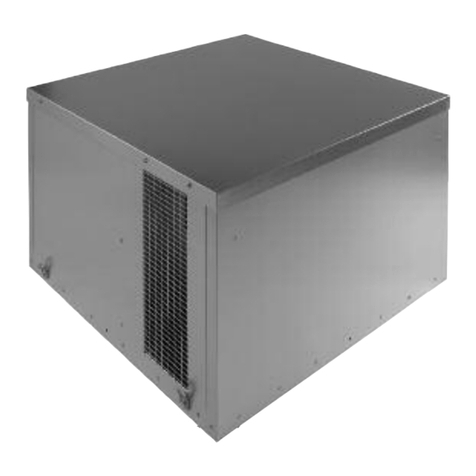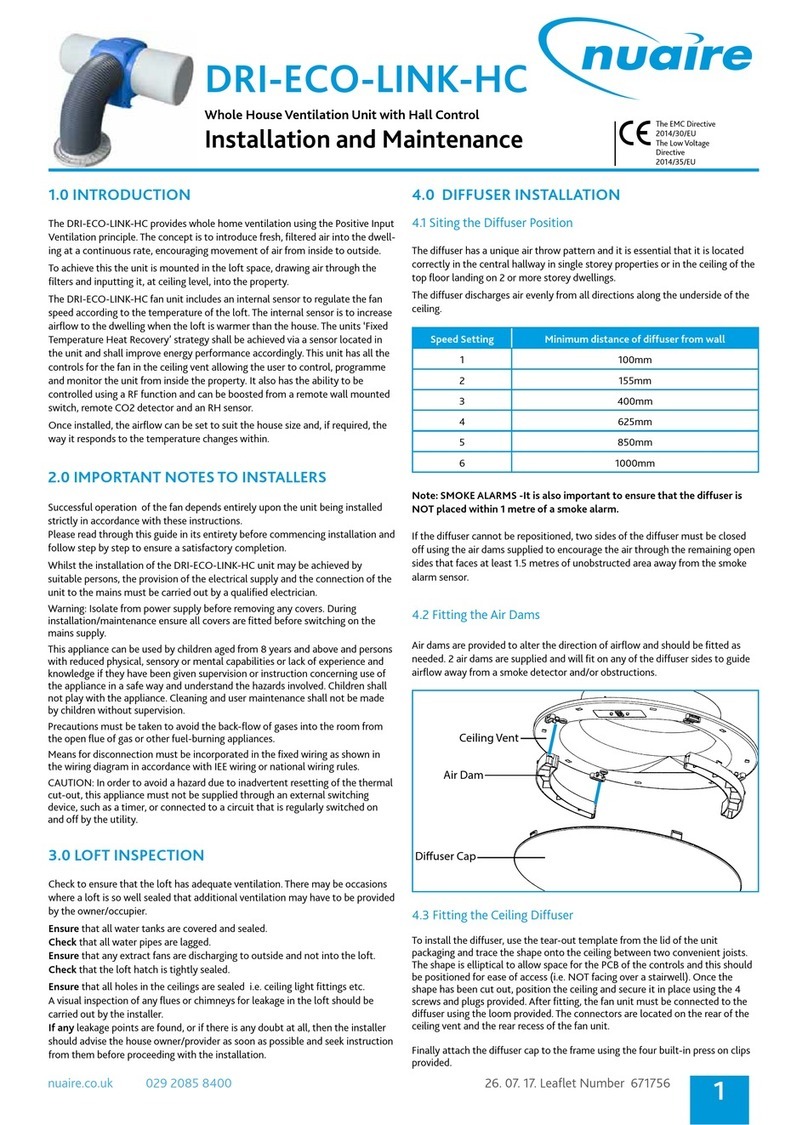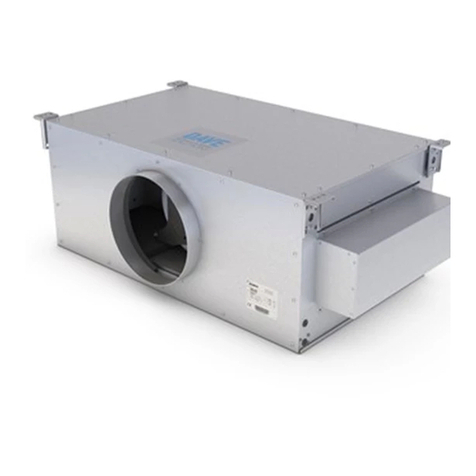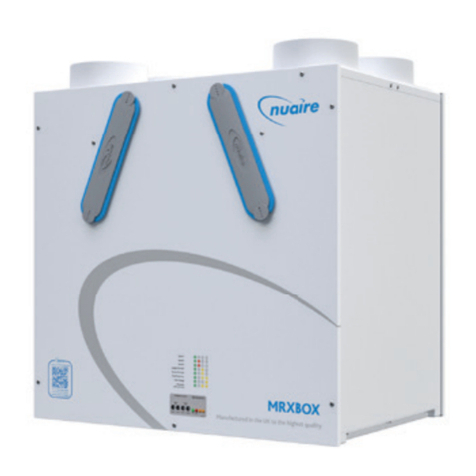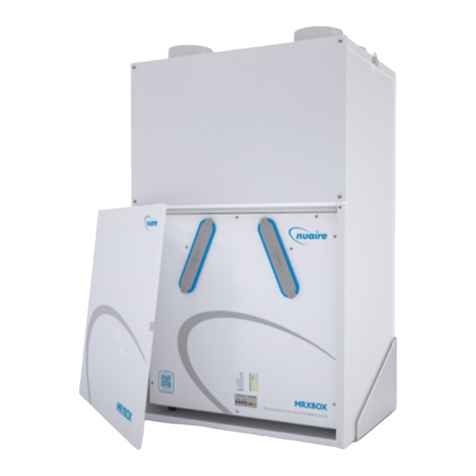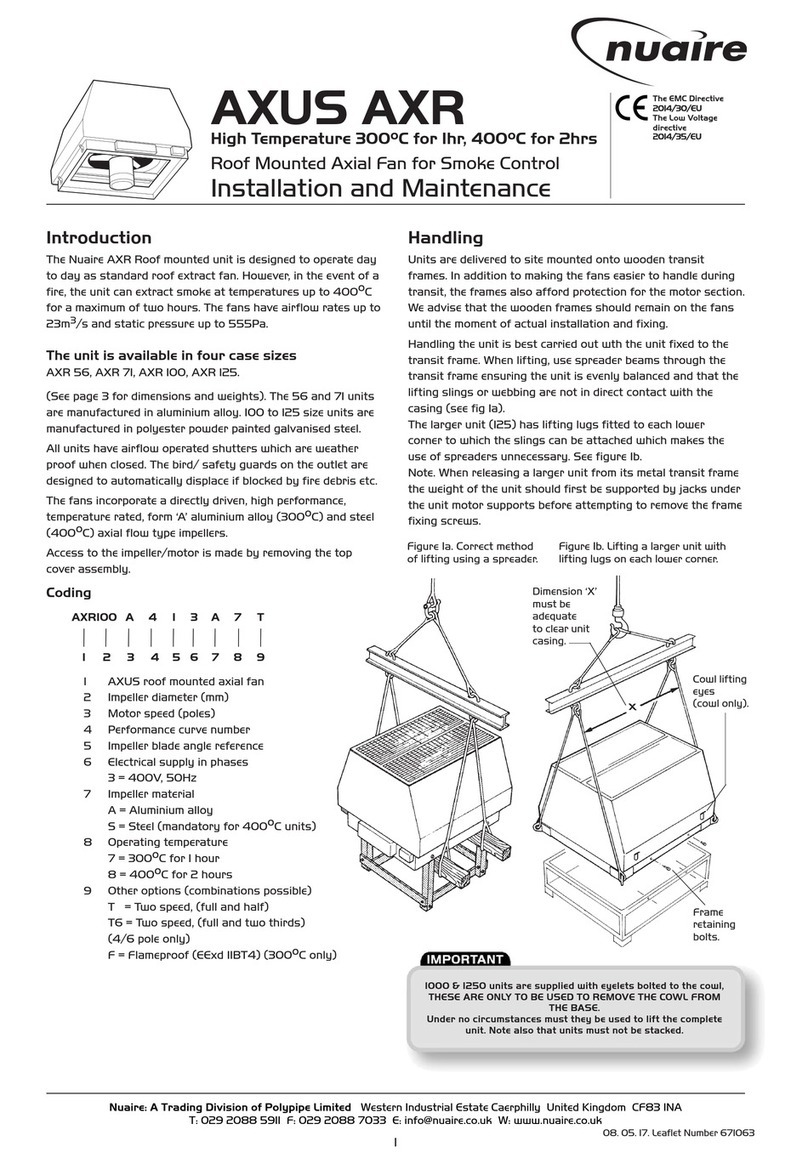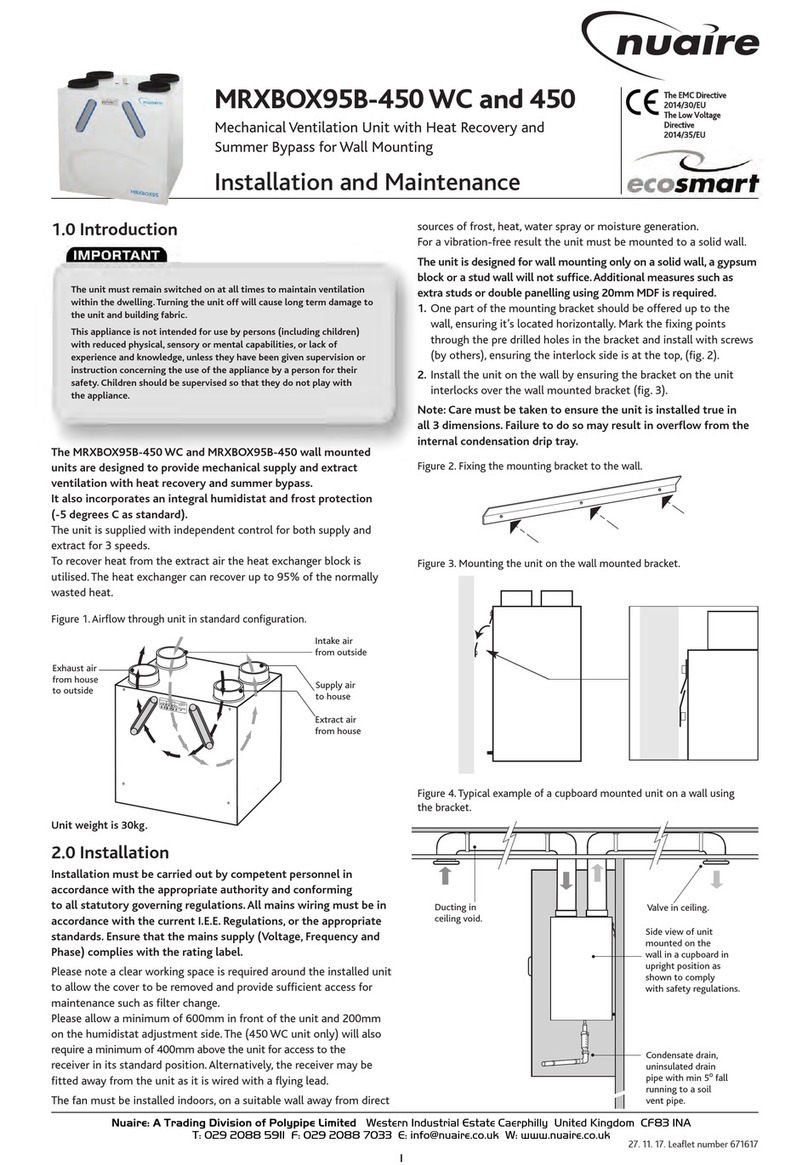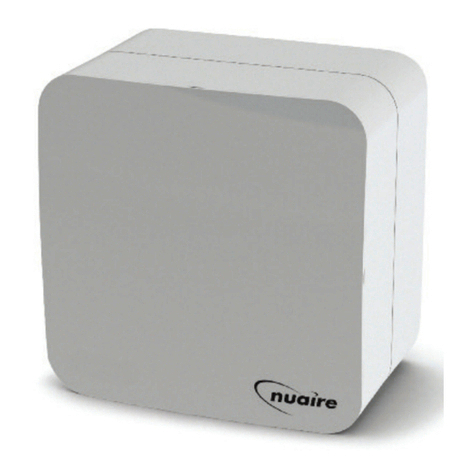Installation and Maintenance OPUS (R range)
2
Installation
a) An opening should be prepared to accept the fan case
plus a clearance of 5 - 10mm which will be necessary to
allow for the fixing brackets. Therefore an area 327mm x
245mm will be required. Care must be taken during this
operation as an aperture larger than 335mm x 253mm
will not be covered by the front panel skirt.
It is assumed that a solid non reverberant mounting posi-
tion has been selected, and the necessary passages for
ductwork, from outlet spigot and to subsidiary inlet
spigot (if a second room is to be ventilated) as well as the
electrical connection prepared. It is also assumed that
compatible ductwork is already installed.
b) Mounting brackets are supplied with all OPUS fans but,
depending on the type of unit, may need to be shortened.
The bracket has a series of notches, one of which is suit
able for your unit. Offer up the bracket to the unit (small
leg of bracket to back of unit) and note the notches which
correspond with the back of the skirt. Using a hacksaw
cut the bracket tolength. Similarly prepare the two
remaining brackets. (Fig. 3).
Attach the three brackets to the large 'Y' shaped plate
using the self tapping screws supplied to form a
mounting frame. (Fig. 4).
Position the mounting frame in the prepared aperture so
that the ends of the three cut brackets are flush with the surface
of the wall. Secure the mounting frame with suitable fixings.
c) Unclip and remove the fan module from the case.
Knock out a suitable cable entry hole in the rear face of
the case.
If a second room is to be served remove the appropriate
weakened area from the case, and, working from the
inside fit the subsidiary inlet spigot by passing it through
the case and turning it one quarter of a turn to lock in
position, see fig. 5.
Fig.3. Selecting bracket length.
Fig. 4. Mounting frame assembly.
Fig. 5. Fitting a subsidiary spigot (supplied in optional kit)
d) Offer up the casing to the mounting frame feeding the
supply cable through the entry hole. Engage the outlet
spigot(s) in the ductwork and fix the casing to the frame
using the three screws supplied.
e) Connect the wiring to the internal terminal block/socket.
f) Fit the fan module to the case, mating it's plug fully with
the internal socket. Secure in position with the two spring
clips.
g) Re-fit the cover using the 4 screws provided. Fit the fiters
into the front cover panel rebates. NOTE: If a subsidiary
spigot kit is employed the Balancing Plates included can be
inserted under the filters to adjust the extract from the
rooms.Test / run the unit.
Fig. 6. Flatduct installation
Installing the unit into flatduct.
It is assumed that the flatduct is already fitted with a plenum
section incorporating a 100mm dia. spigot in the area of the pro-
posed extract fan.
a) Proceed as in steps (a), (b) & (c) above.
b) Feed the 100mm flexible ducting (supplied) through the
rear of the mounting frame and fit to the spigot on the
flatduct plenum.
c) Offer up the casing to the mounting frame and join the
other end of the flexible ducting to the outlet spigot using
tape (not supplied). Fig. 6.
Feed the electrical supply cable through the entry hole and
fix the case to the mounting frame using the three screws
supplied.
Continue as in (e) to (g) above.



